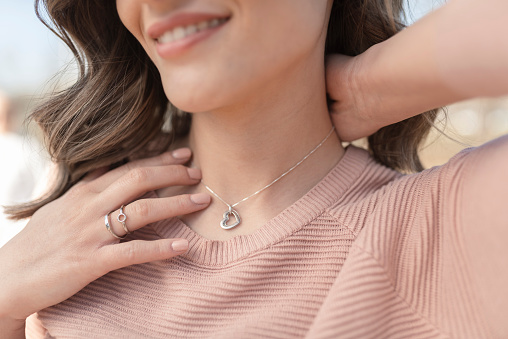
The popularity of Indian jewellery has spread far beyond India’s borders, with enthusiasts worldwide admiring the intricate designs and rich cultural history it represents. In Australia, the love for Indian jewellery has been steadily growing, with around 0.8 million Indian population in the country and a large number of stores and designers catering to the demand for these unique pieces.
Whether in Sydney, Melbourne, Brisbane, or any other major Australian city, you can find a range of authentic options to help you stand out. This beginner’s guide to buying Indian jewellery in Australia will explore the different styles that are available, offer tips on choosing the right piece for your budget and occasion, and guide how to ensure that you’re buying an authentic piece that will last you a lifetime.
Understanding the Different Styles of Indian Jewellery
Indian jewellery can be broadly classified into two categories: traditional and contemporary.
Traditional Indian jewellery is deeply rooted in the country’s history and culture and is typically made using gold, silver, and precious gemstones. Contemporary Indian jewellery, on the other hand, is a fusion of traditional and modern styles. It incorporates Western design elements such as minimalism and clean lines while retaining the intricate craftsmanship and use of precious materials characteristic of traditional Indian jewellery.
Some of the most prevalent styles include:
- Kundan Jewelry: Kundan is a traditional style that originated in Rajasthan. It is made using a technique called “Kundan work,” in which gold foil is placed between the stones and the mounting to enhance their brilliance.
- Polki Jewelry: Polki is another traditional style similar to Kundan. However, instead of using gold foil, Polki jewellery features uncut diamonds set in gold or silver. It is prized for its antique look and is often passed down from generation to generation.
- Temple Jewelry: Temple jewellery is a traditional South Indian style that originated in Tamil Nadu’s temples. Intricate motifs of gods and goddesses characterise it and are typically made using gold, rubies, emeralds, and pearls. Brides often wear temple jewellery during weddings and other religious ceremonies.
- Meenakari Jewelry: Meenakari is a traditional style that originated in Rajasthan. It is characterised by intricate enamel work on gold and silver, often combined with precious gemstones. Meenakari jewellery is known for its vibrant colours and intricate designs.
Tips for Buying Authentic Indian Jewellery
Here are some tips to help you ensure that you’re buying authentic Indian jewellery:
- Check the Quality of the Gemstones: Indian jewellery is often made using precious gemstones such as diamonds, rubies, and emeralds. When buying these ornaments, check the quality of the gemstones to ensure that they’re genuine and of good quality. Look for stones that are clear, bright, and free of any cracks or inclusions.
- Examine Craftsmanship: Indian jewellery is known for its intricate designs and superb craftsmanship. When buying Indian jewellery, take the time to examine the craftsmanship to ensure that it’s of good quality. Look for fine details such as filigree work, enamel work, and stone setting.
- Buy from Reputable Sellers: When buying Indian jewellery, it’s important to buy from reputable sellers who specialise in Indian jewellery. Look for sellers with a good reputation and a track record of selling authentic pieces.
Indian jewellery in Australia celebrates India’s rich cultural heritage and is renowned worldwide for its beauty and craftsmanship. When buying Indian jewellery, it’s important to understand the different styles and unique features, choose the right piece for your budget and occasion, and ensure you’re buying an authentic piece using quality materials and craftsmanship.
Author: Amelia
